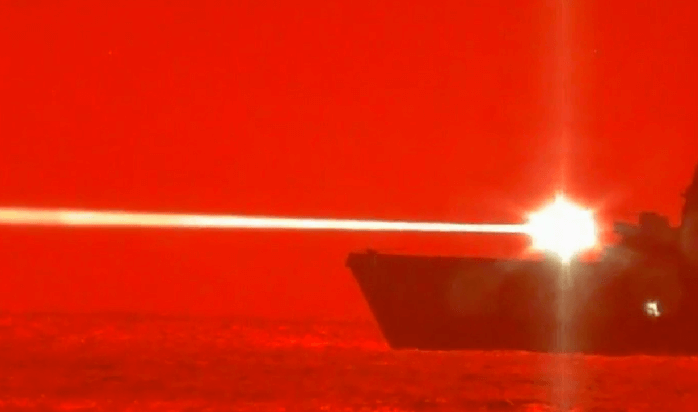When Hollywood’s’ Star Wars made its first appearance in the late 1970s on the global cinema landscape, it took the world by storm. Broadly labelled as a huge commercial success built around a wonderful science fiction story, almost forty years later it does not look a fiction any longer.
Russia Bids Adieu To It Legendary ‘Careless’ Aircraft That Even Overwhelmed The Boeing Planes
It has become real, a tangible and future means of warfare that is being rapidly explored and worked upon by few countries to ensure that their core national interests are not only maintained but also enhanced.
The Defence Research and Development Organisation (DRDO)’s ambitious Directed Energy Weapon (DEWs) ADITYA project is taking a big leap forward by making India a great military power through harnessing the power of laser and microwave.
DEWs use high-energy lasers and microwaves and this technology is considered a critical emerging military know-how on which all major powers are currently working.
The US, Russia, France, UK, Israel, China and of course India too, is working on DEWs. Though none of the militaries have deployed their DEWs in an operational capability yet, military analysts are of the view that the massive work being done in the domain, is certain to bring about a transformational change in military warfare in not-so-distant future.
In India, media reports have suggested that a national plan is afoot with short, medium and long-term plans to develop a number of DEWs variants up to 100 KWs of power. In August 2017, DRDO reportedly successfully tested a 1-KW laser weapon at Chitradurga on a target 250-metres away.
The target took 36 seconds to be hit. Parliamentary records have revealed that a couple of vehicle-mounted high power laser-directed energy systems have been worked upon by the DRDO and shown to the military for their feedback.
Further, the country is reported to have already developed KALI (kilo ampere linear injector), a linear electron accelerator for targeting long-range incoming missiles and more work on the advanced versions of KALI is underway.
A Chemical Oxygen Iodine Laser (COIL) as a 30-100KW vehicle-mounted gas dynamic high-power laser-based DEW by LASTEC is under development too. However, not much detailed information on DEW work in India is available. Except that both the Army and IAF have come up with roadmaps regarding their requirements for DEWs in the coming years.
Some of the works underway in DEWs domain in India are air defence dazzlers that will take on incoming enemy fighter jets or attack helicopters, may take a couple of years while 25KW laser systems to destroy missiles at the terminal stage at 5-7 km, might take another five years to become operational.
In order to make current nascent capability operational in a short period of time, two of the DRDO laboratories, Centre for High Energy Systems (CHESS) and Laser Science & Technology Centre (LASTEC) are in the process of eventually involving the burgeoning private sector in the R&D works.
DEWs are very critical for the Indian security environment, especially in the context of the current tense relationship with China and Pakistan. One also needs to note that China is working furiously on various forms of DEWs, including laser weapons.

It has also tested a tactical laser system bearing striking resemblance to US Navy’s Laser Weapon Systems (LaWS), an anti-surface, anti-air defensive weapon system. It is reported to be working on developing airborne laser pods that might be mounted on PLA warplanes like J-15, J-20s and could be used to shoot down air-to-air missiles or blind enemy pilots within visual range or even destroy larger fighter jets or ballistic missiles.
Russia too has made a lot of progress in this field. It has officially confirmed moving forward with deploying DEWs in its weaponry.
From an operational and strategic perspective, DEWs are weapons of the future. Security experts are of the view that once they are developed to a certain level, the ability to effectively target the incoming unmanned UAVs and drones which currently are doing extremely well in the Armenia-Azerbaijan war will increase manifold.
Further, the air dogfights will become obsolete and countries having these weapons will enjoy a great deal of strategic superiority over adversaries.




